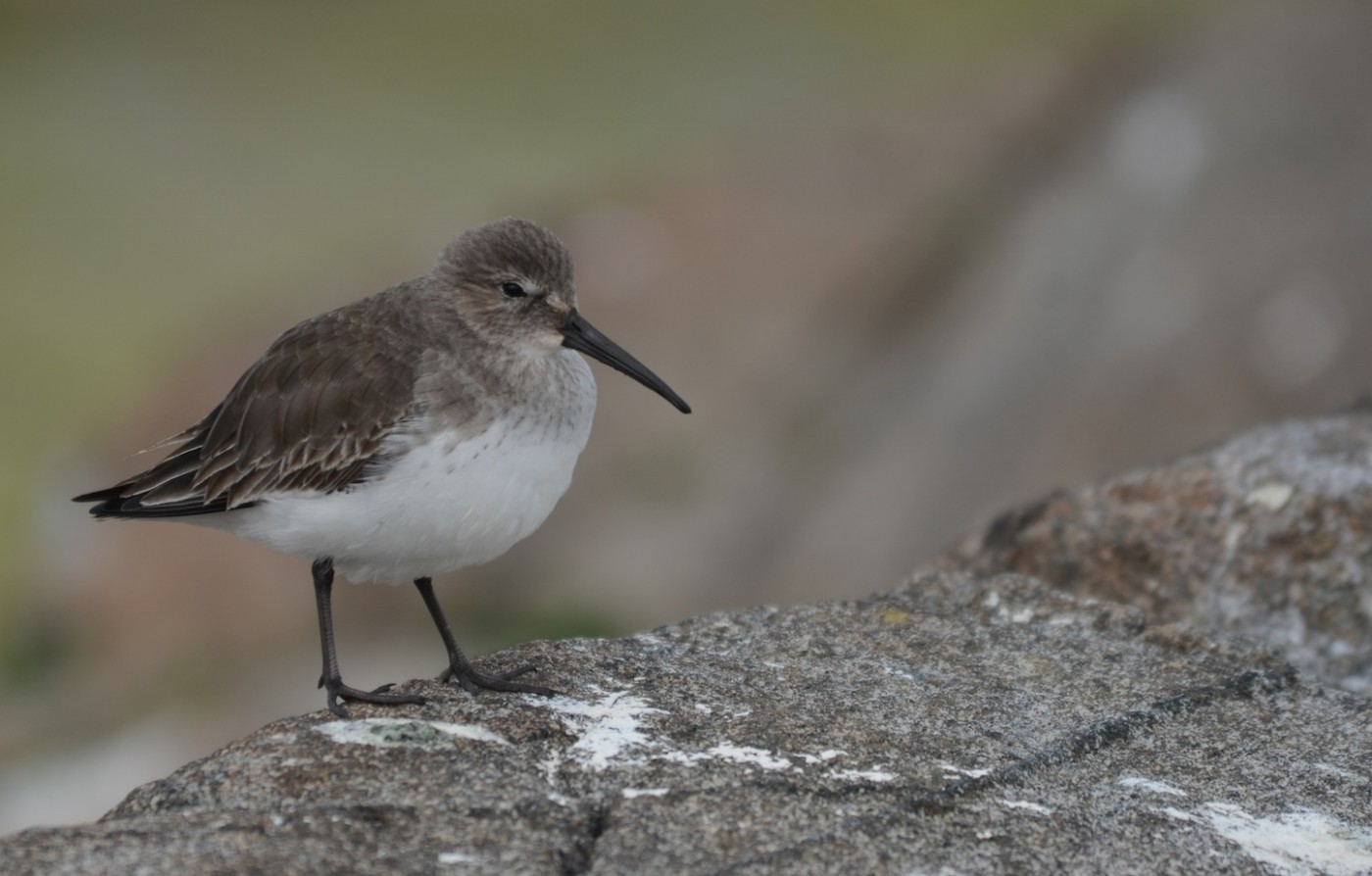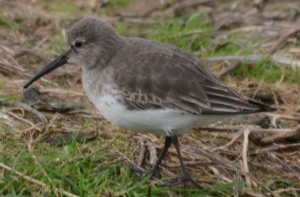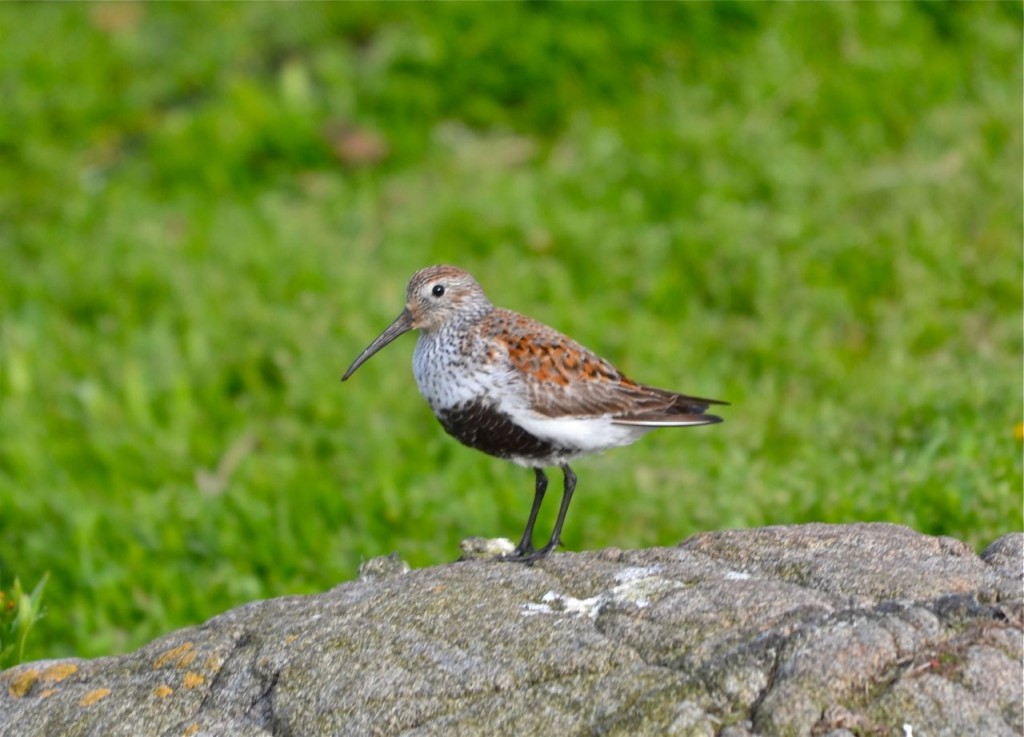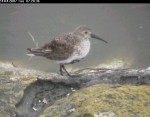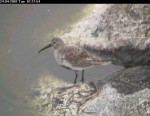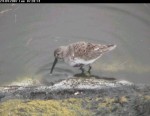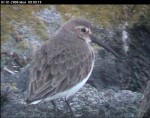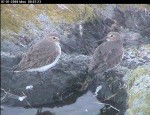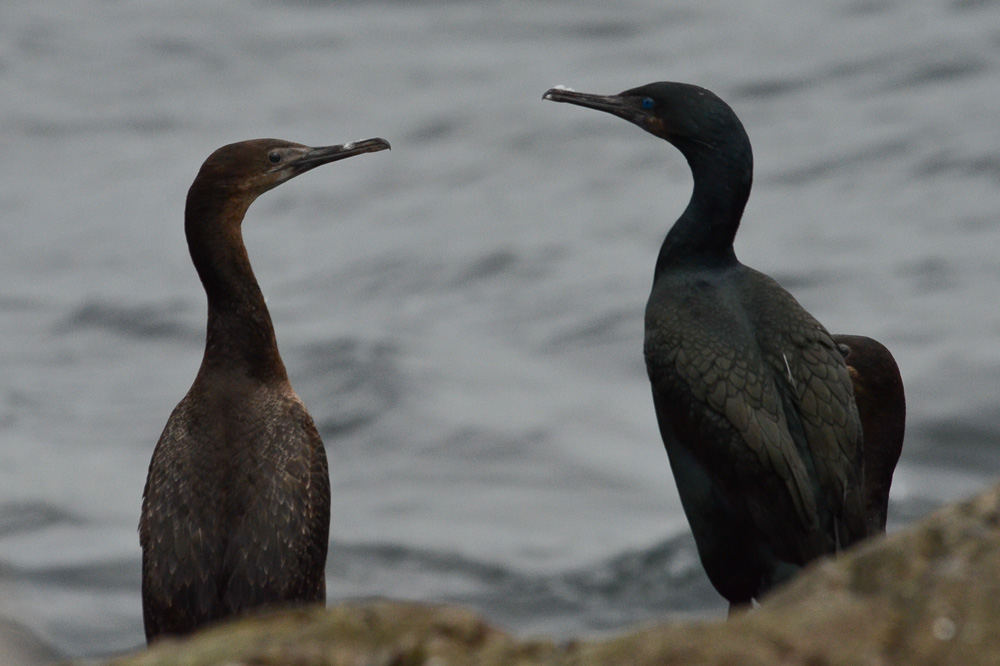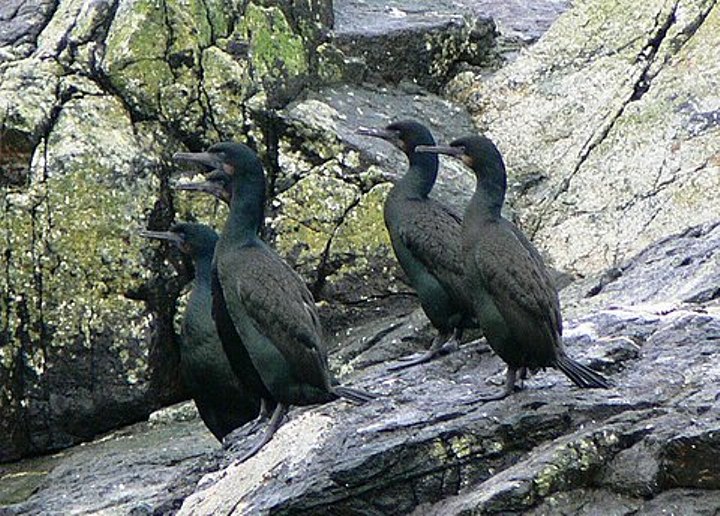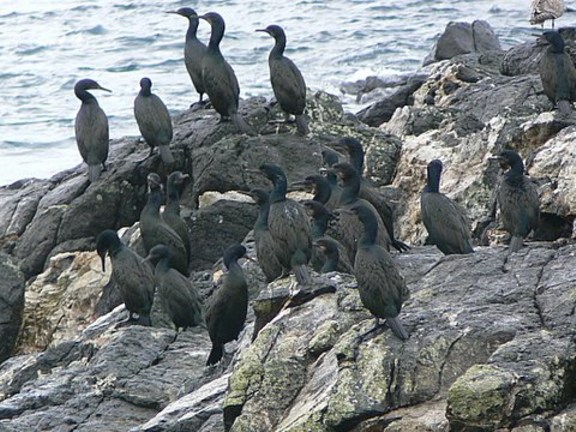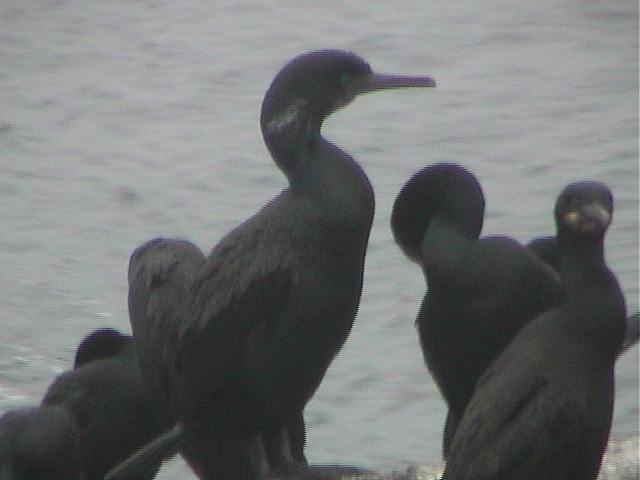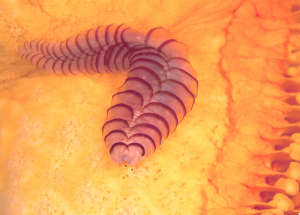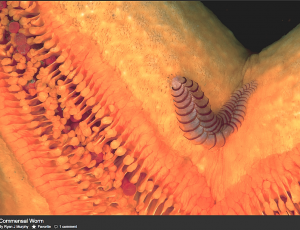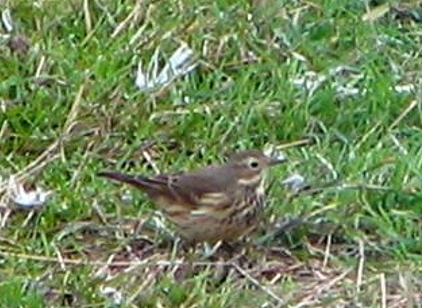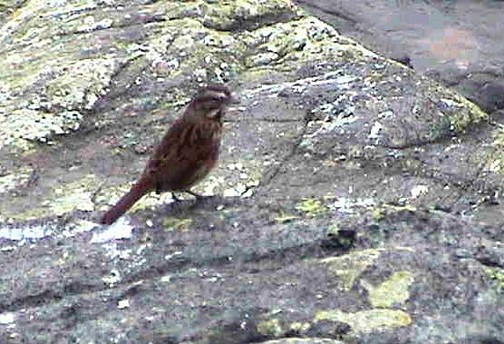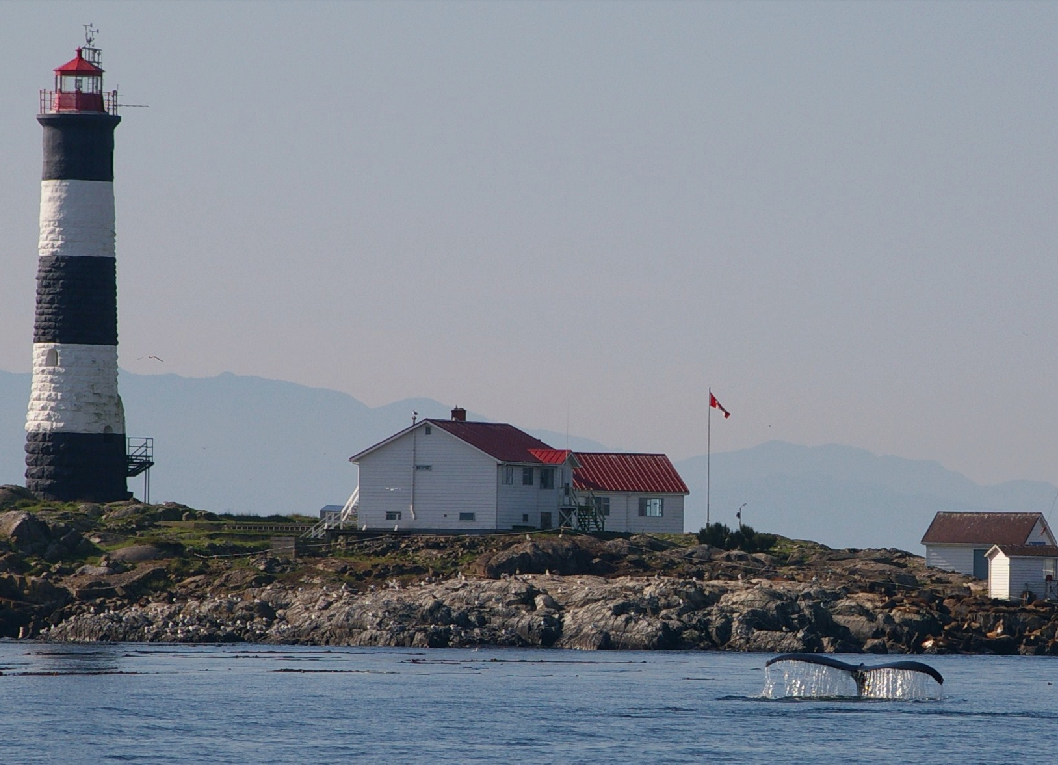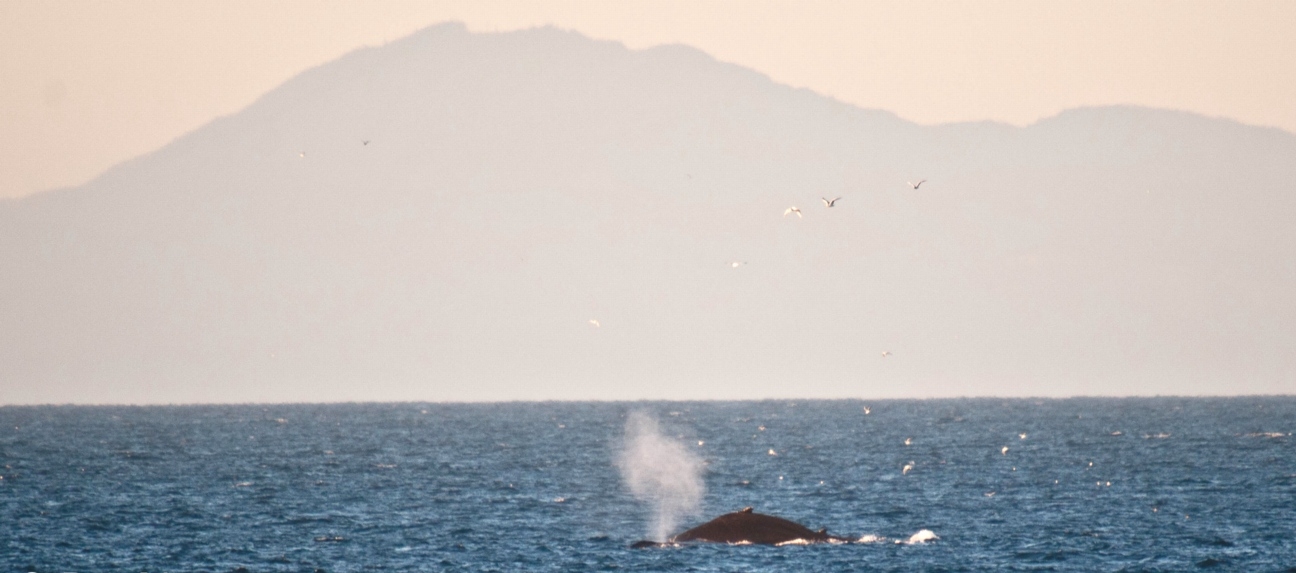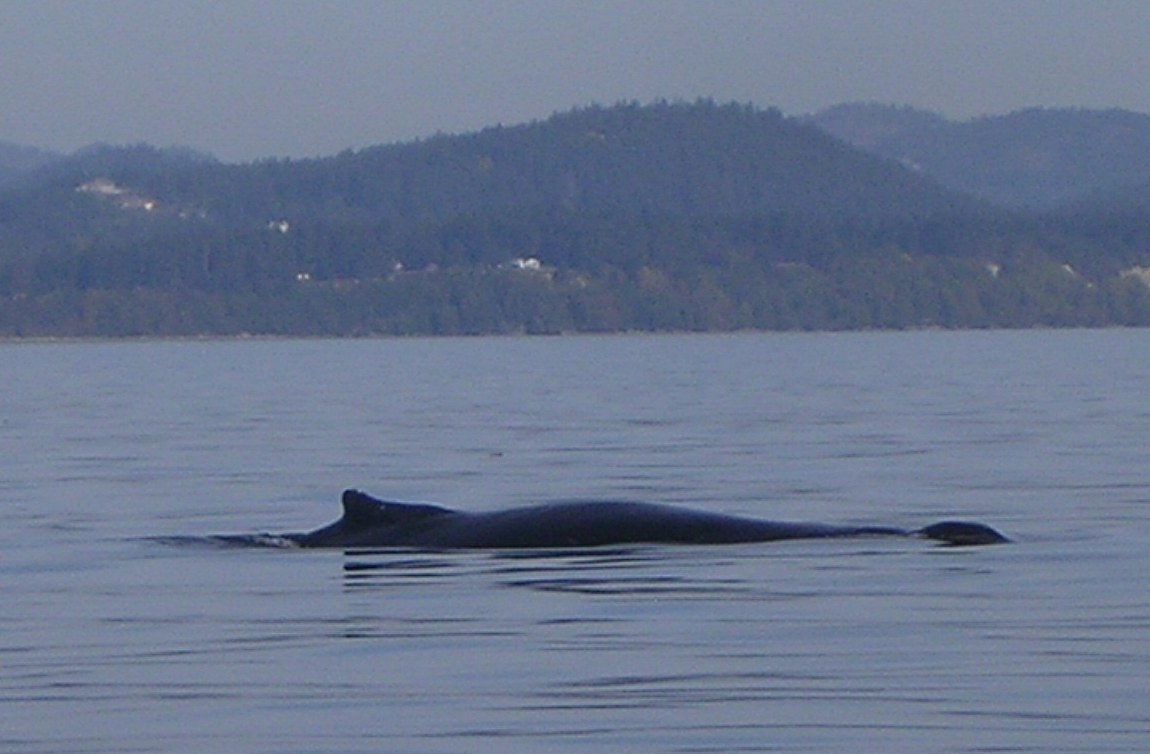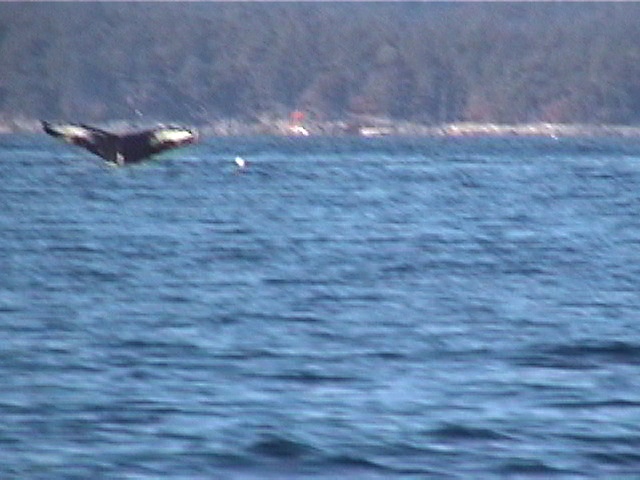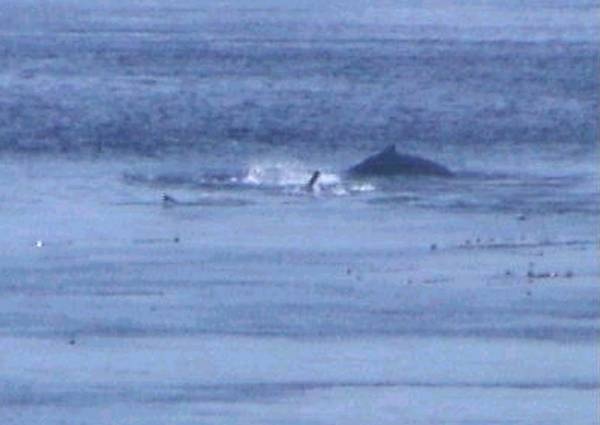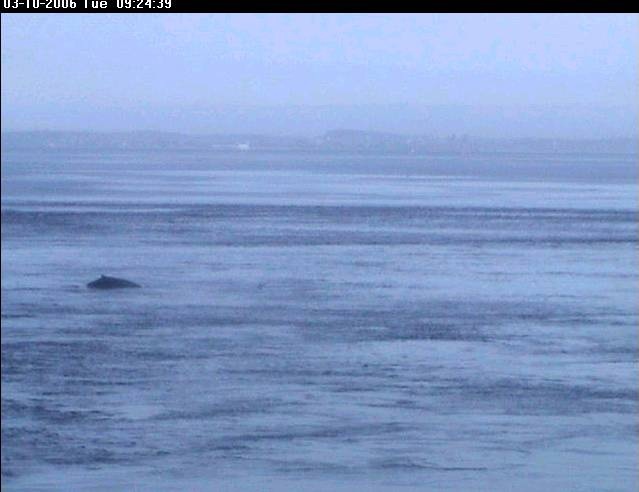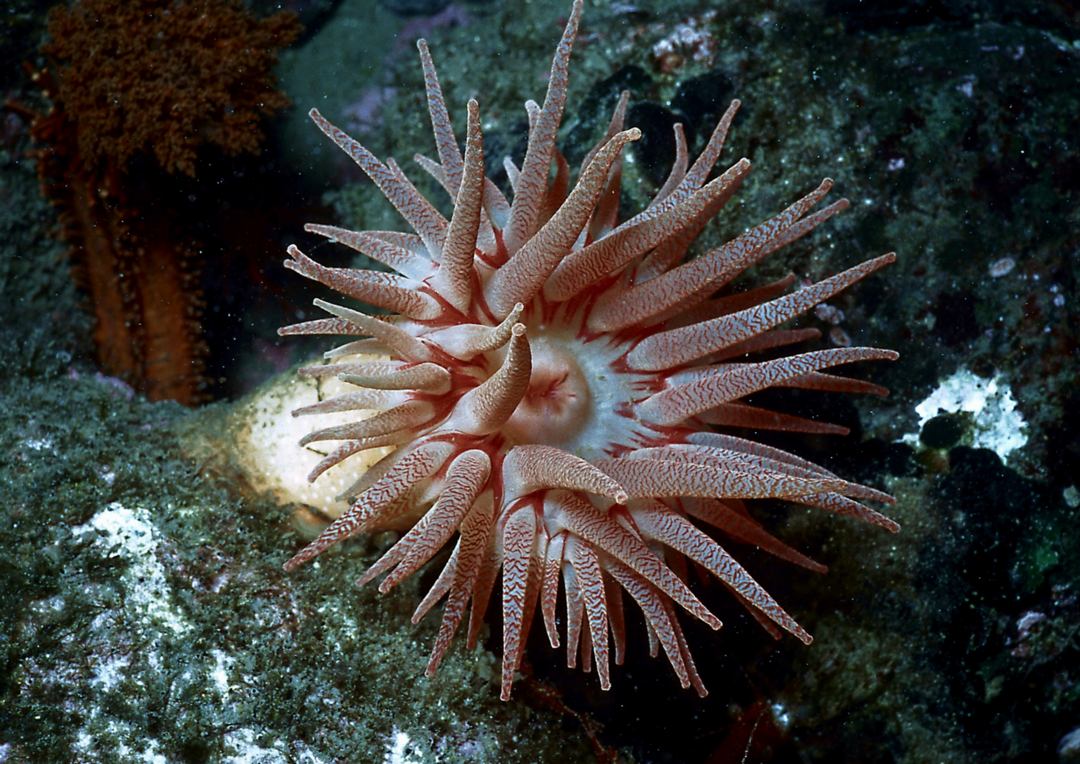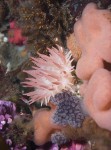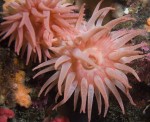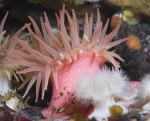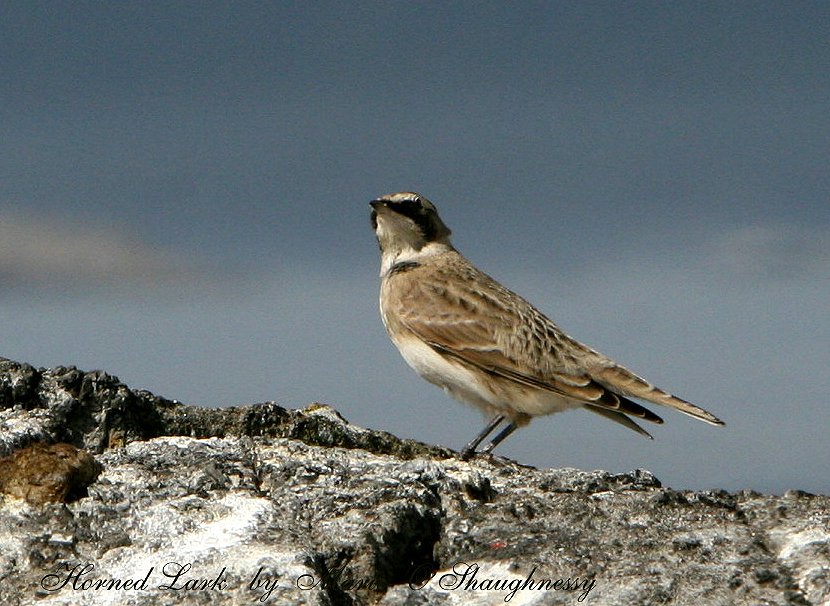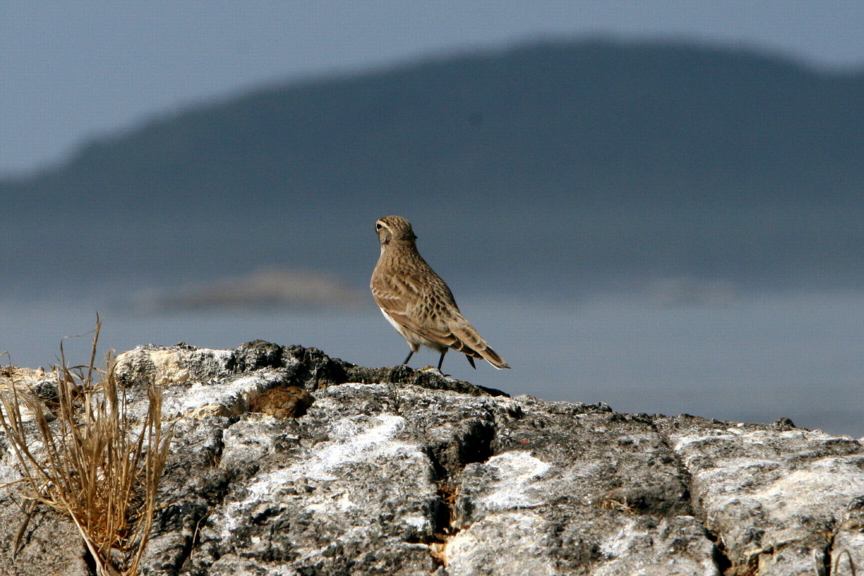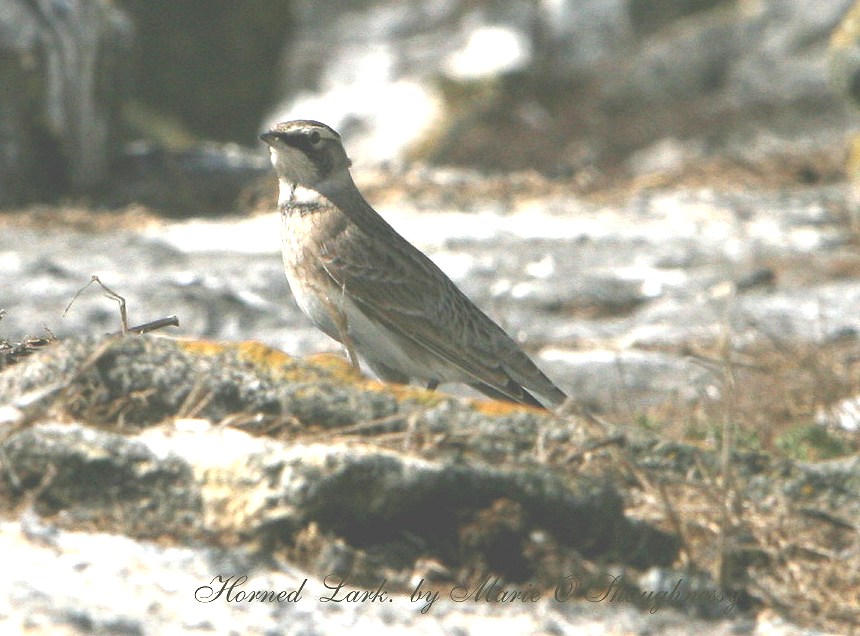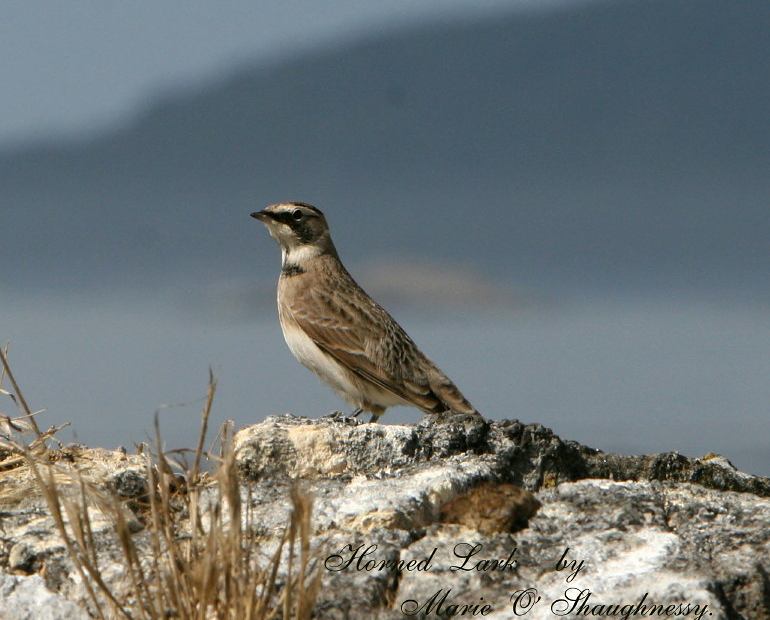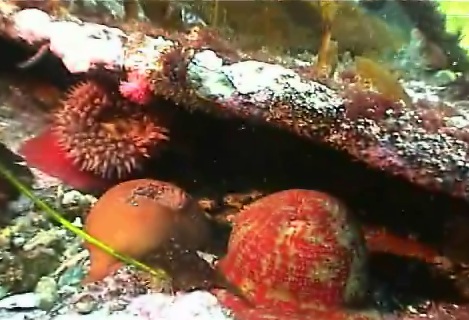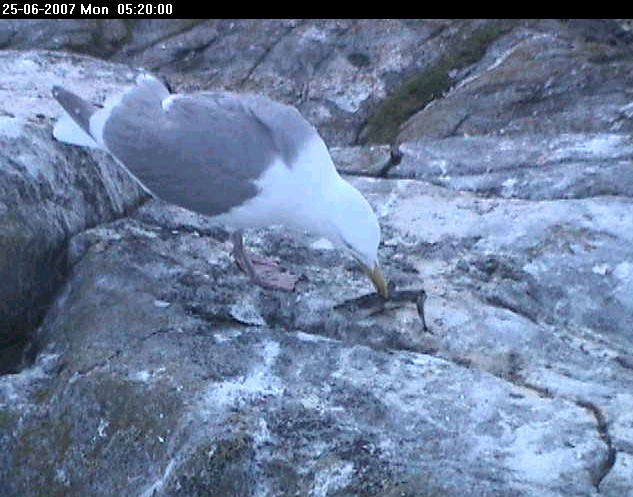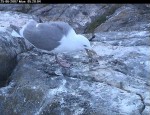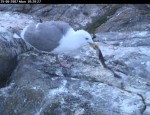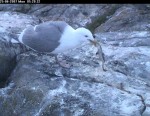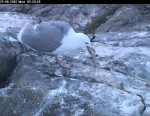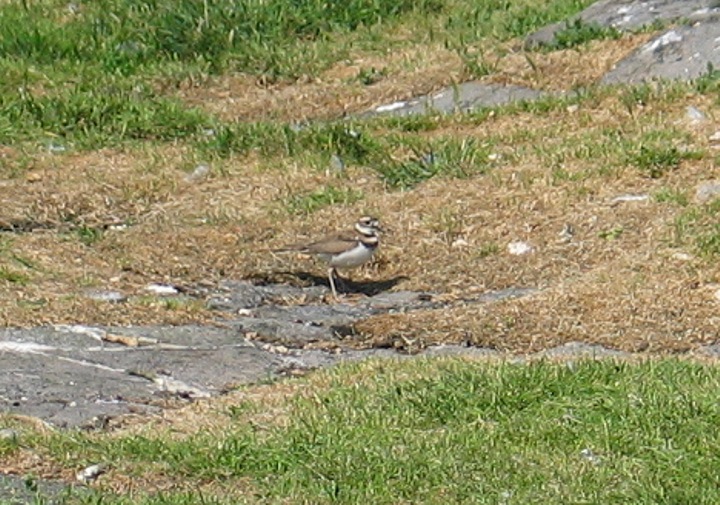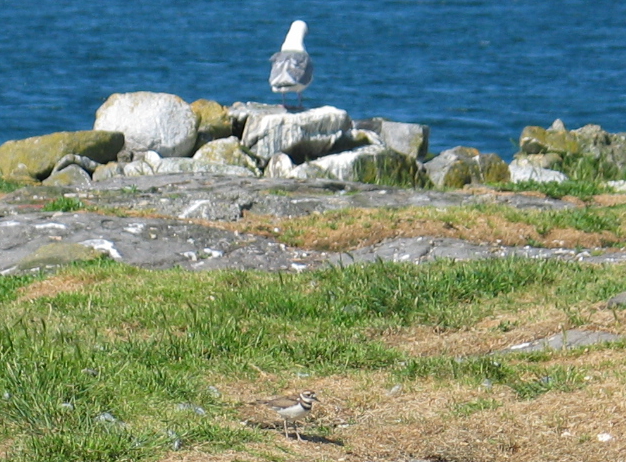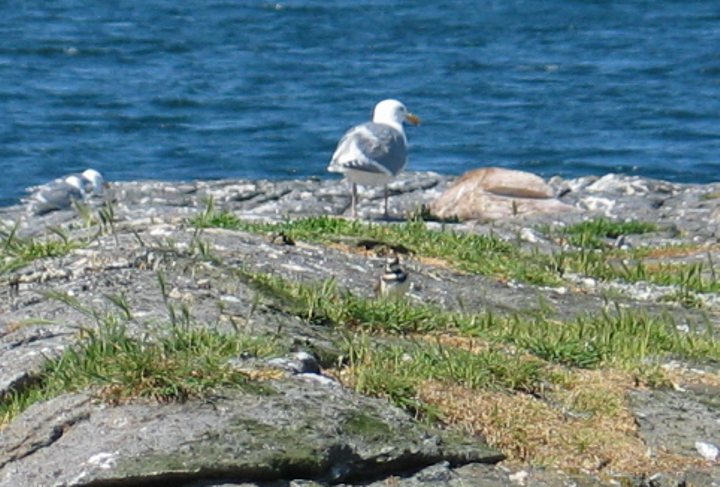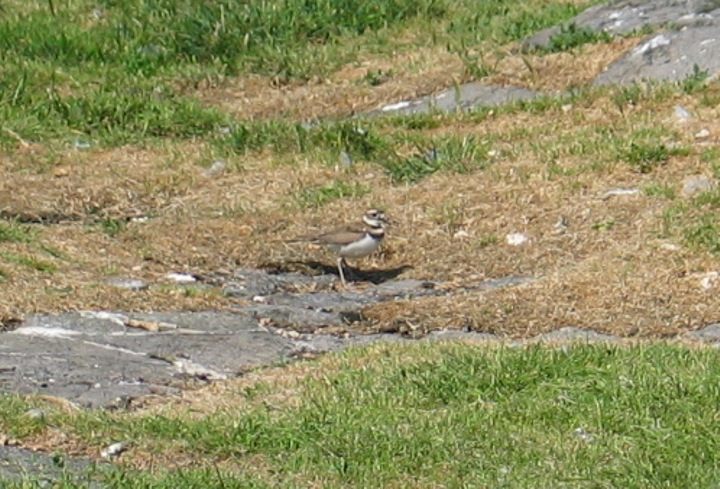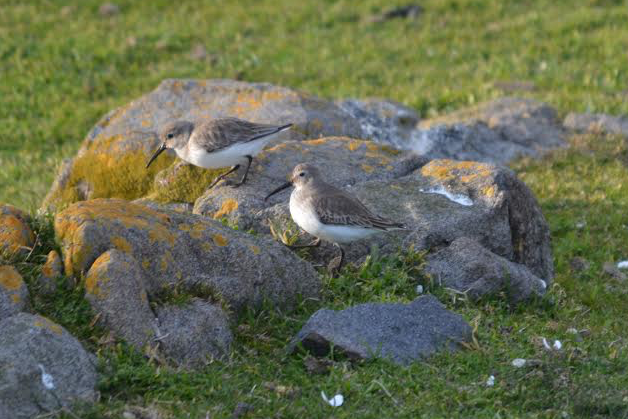
Dunlin, Calidris alpina … photo by Rod King March 18, 2021 ( click to see size comparison with a Canada Goose)
| Domain | Eukarya |
| Kingdom | Animalia |
| Phylum | Chordata |
| Sub-Phylum | Vertebrata |
| Class | Aves |
| Order | Charadriiformes |
| Family | Scolopacidae |
| Genus | Calidris |
| Species | alpina (Linnaeus, 1758) |
| Common Name: | Dunlin |
- Summer plumage from the video below
- Dunlin at a tidepool at Race Rocks. Note black patch on ventral area.Thanks to PB for capturing these images April, 2007.
- In April 24, 2007, we received these pictures and video for a shore bird identified as the Dunlin, Calidris alpina, which had just been photographed using the remote camera 5 at Race Rocks.
- Dunlin showed up at the freshwater pool again in January 2008. Note the winter plumage in contrast to the first three pictures showing breeding plumage here
- Thanks to PB for capturing these images on January 7, 2008.
The video shows the typical feeding pattern of the dunlin, probing the debris at the bottom of tidepools for crustaceans, insects and larvae.
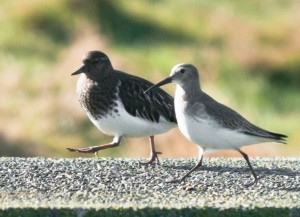 In this picture taken by Raisa Mirza in December 2011, you can compare the Dunlin in it’s winter plumage with the Black turnstone. They often feed together in the winter months around the tidepools and over the rain-saturated lawn areas.
In this picture taken by Raisa Mirza in December 2011, you can compare the Dunlin in it’s winter plumage with the Black turnstone. They often feed together in the winter months around the tidepools and over the rain-saturated lawn areas.
See other references on Dunlins posted on this website
Return to the Race Rocks Taxonomy
| This file is provided as part of a collaborative effort by a website observer, faculty, staff and students of Lester B. Pearson College | Date: Oct 2006 |
Pam Birley |

